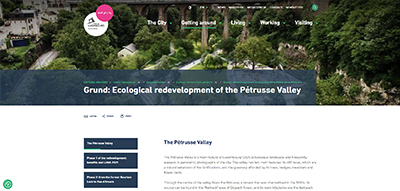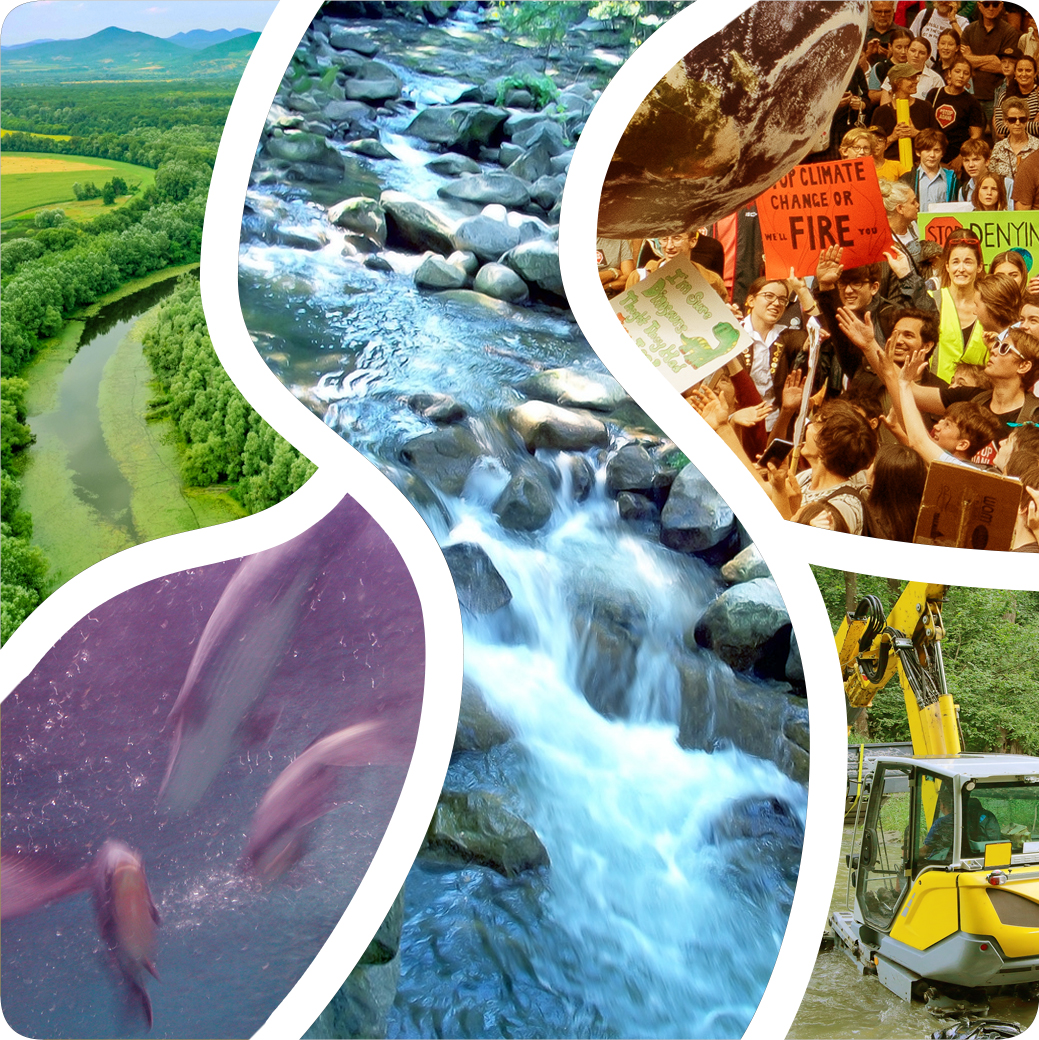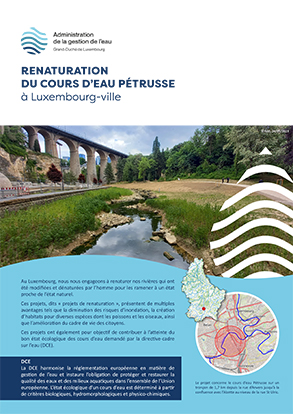Julia Lotti
Project manager, Ministry of Environment, Climate and Biodiversity, Water management agency, Watercourse Unit
EC / PolicyMakers / Funders / Government

My Projects
As a public authority, we oversee all river restoration projects carried out in Luxembourg. Our responsibilities span both the planning and execution phases, including on-site supervision during construction. We regularly organize meetings to exchange ideas, initiate new projects, and monitor their progress, maintaining a strong presence on the ground. These collaborative efforts are essential to advancing our shared objectives.
In addition, the Water Management Agency is responsible for issuing the necessary permits.
 Pétrusse restoration in Luxembourg-City
Pétrusse restoration in Luxembourg-City
- Key project facts
Pétrusse restoration in Luxembourg-City
The Pétrusse stream was once confined to a straight concrete channel, which disrupted its ecological function—eliminating habitats, blocking fish migration, and accelerating water flow. It also suffered from extreme flow variations, with very low levels during dry periods and sudden surges during floods, increasing flood risks. The restoration project aims to restore ecological and hydrological balance by creating habitats, enabling fish passage, and improving flood regulation. Integrated into a broader landscape design, the project also included infrastructure upgrades such as utility network adjustments, bridge reconstruction, and enhancements to the valley’s cultural heritage.
- What impact did these projects have on biodiversity, if any?
We continue to monitor the impact on biodiversity, which will take time to fully assess. However, river habitats have already shown rapid improvement, and we anticipate a rise in biodiversity. Water quality, however, remains a challenge.
- What work challenges did you face and what approach did you take to solve them?
Unlike many of our other projects, we were fortunate that the City of Luxembourg owned the land surrounding the Pétrusse, which is typically one of the biggest challenges in river restoration. However, since the project was part of a broader landscape redevelopment of Pétrusse Park, aligning different visions and interests required careful coordination. Thanks to effective communication, a shared agreement was reached.
During implementation, unexpected soil contamination from a former gas plant was discovered, requiring local adaptations.
Another challenge was organizing the construction site: machinery and materials had to be stored outside the flood-prone area to prevent damage during high water events. Clear communication with the construction site overseer was important.
Public acceptance of the project was initially low, particularly because some trees had to be removed to create the new riverbed. To address these concerns, we organized site visits with local politicians and the Minister of the Environment, Climate, and Biodiversity. These visits helped explain the project's goals and highlighted how the restoration would enhance biodiversity.
- What lessons learned are transferable to other places/projects?
It’s really important to stay flexible and ready to adapt the project when unexpected situations arise. Good communication is essential, and it’s important to respect everyone’s interests—even when they don’t fully match your own. The aim is to find a solution that meets everyone's needs while staying aligned with the goals of the Water Framework Directive and the Floods Directive.
My Focus and Approach
- Lessons Learnt - Some recommendations for others?
- What’s most important:
Communication, dialogue.
- Do this, not that:
Be flexible, be open .
- Always start by:
Involving the stakeholders .
- What to do when things get difficult…:
Be open to negotiate, to communicate.
- 5 simple steps to:
- Set a clear goal for the restoration project.
- Communicate and involve all key stakeholders, administrations, and agencies from the beginning.
- Select a competent engineering office and river ecologist with experience in ecological restoration.
- Be present during the construction phase to guide machine operators, who are often more familiar with road or building construction than river restoration.
- Stay flexible and ready to adapt the project if unexpected discoveries occur or if the river evolves differently than planned.
- The biggest barrier and what I am trying to do about it:
Usually our biggest barrier is land availability.
- What’s most important:
My Journey
- My journey:
During my Master’s degree I focused a lot on hydromorphology and water-related courses. I did an internship at the Water Management Agency in Luxembourg and after finishing my degree I applied and have been working there for 6 years now.
- My Education:
- Bachelor’s degree in Geography, University of Strasbourg (France).
- Master’s degree in environmental Geography, University of Strasbourg (France).
- Favourite part of the work I do:
My day-to-day work is very diverse, as we manage a wide range of projects that vary in type and scale. One of the most rewarding aspects is being involved from the very beginning and then seeing the project come to life—especially watching the construction phase and the development of a new riverbed.
Interview
Key Topics:
Key Topics
These relate to specific topics (e.g. technical solutions; restoration activities etc.) addressed within the showcase materials.
- River restoration
- Ecological continuity
- Communication
Prone2Success Factors Demonstrated:
Prone2Success Factors Demonstrated
These are the Prone2Success checklist factors which are highlighted within this showcase. More information on the Prone2Success checklist can be found here.
- Measurable goals to improve ecological status
- Supports WFD, NRL and other restoration policy goals
- Communicate/engage with stakeholders from the outset
- Engage with the local community from the outset
- Obtain sufficient finance for all project stages
- Local planning processes are transparent / clearly understood
- Include long term monitoring
- Ensure stakeholder understanding / education of restoration goals & benefits
- Demonstrate specific ecological improvements/legal compliance / communicating results during and after the project
- Take climate change into account
NRL Restoration Categories:
NRL Restoration Categories
These are the restoration categories (listed under Annex VII of the European Nature Restoration Law (NRL) which are relevant to this showcase.
- [2] Improve hydrological conditions
- [5] Re-establish river meandering
- [6] Remove obsolete barriers
- [7] Re-naturalise river beds
- [8] Restore natural sedimentation
- [9] Establish riparian buffers
- [12] Assist migration of provenances and species
- [22] Improve connectivity across habitats
- [24] Remove / control invasive species
- [26] Restore fish spawning / nursery areas
- [33] Convert brownfield sites, industrial areas, quarries into natural sites
Was this information useful?
No
Thank you for submitting feedback.
Click here to share your thoughts



